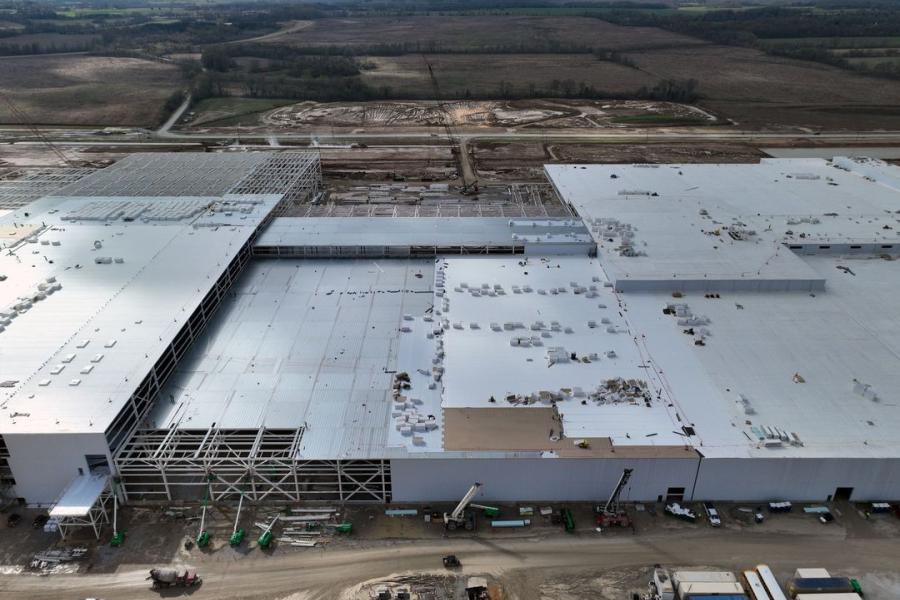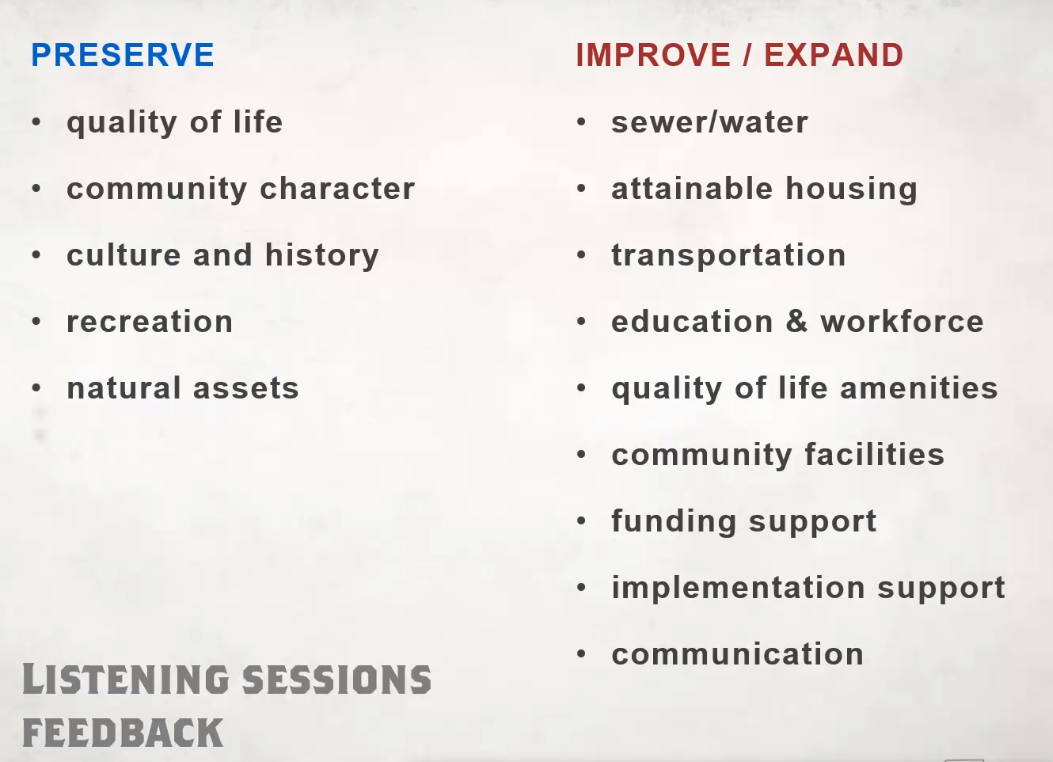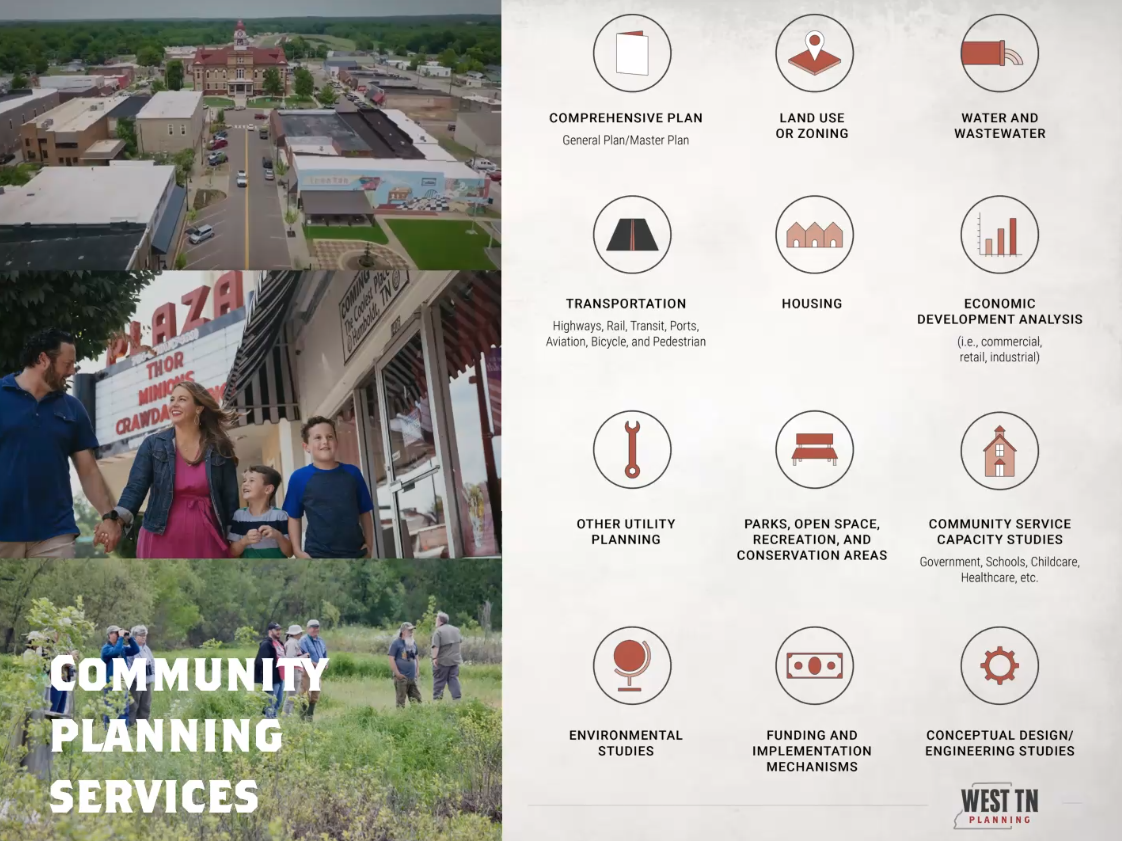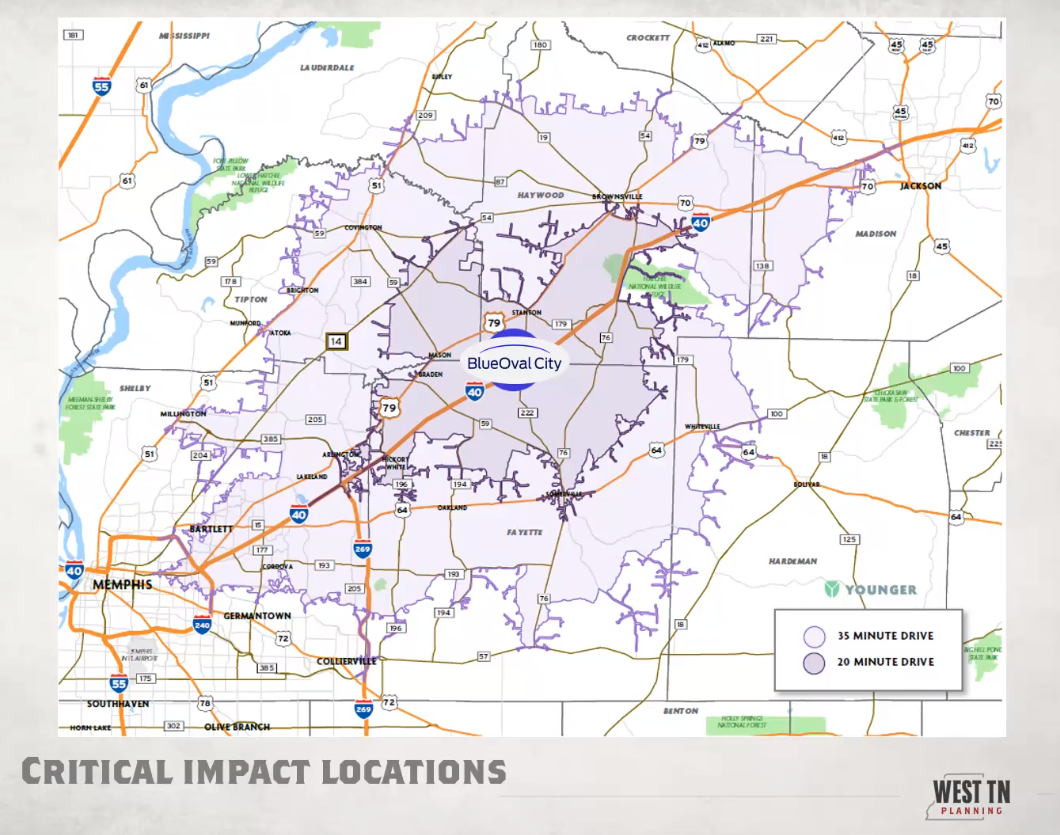New West Tennessee Planning website to highlight resources, services for region

By KATE COIL
TML Communications Specialist
A new website outlining current planning efforts surrounding the development of Blue Oval City and providing resources for future planning endeavors impacting local communities is now available to local leaders.

Officials with Gresham Smith and HDR gave updates on how regional planning processes are progressing and what more individual planning help for municipalities may look like as things move forward during a recent Blue Oval Community Impact Session hosted by the Tennessee Department of Economic and Community Development (ECD).
This coincided with the launch of the new website, https://westtnplanning.tn.gov/, which will provide numerous resources for planning and development in the 120 West Tennessee cities surrounding Blue Oval City. The website allows for the uploading of data including local and regional plans, regulations and zoning, and provides other information.
Drew Gaskins, senior planner with Gresham Smith, said West Tennessee Planning will serve as the umbrella for both regional and local planning efforts being provided to communities as well as a point of resources and contact. He said planners with multidisciplinary backgrounds will be working together to aid in planning and development as partners with local communities.
“We are really focusing on the entire grand division of West Tennessee and immediate needs as a result of this growth,” Gaskins said. “Our focus is on all 21 counties in this grand division really speaks to the expectation and potential regional impact this will have, not just in the next couple of years but in the next couple of decades. What we are hoping to accomplish in this effort is to ensure communities have the tools in place to deal with that growth through growth management and infrastructure standpoints whether that grow is on your doorstep today – which for some of your towns and cities it is – or it is something you’re wrestling with five, ten, 15 years down the road.”
Gaskins said West Tennessee Planning is meeting with those already doing the work on planning concerns in the area from state agencies to regional and local planning groups that have stakeholder interest. While he recognizes that many communities are concerned with how Blue Oval and related growth will impact them on a local level, Gaskins said a top-down approach is needed to ensure regional planning concerns don’t become local issues.

“Some of these needs –whether it’s transportation, housing, or infrastructure – don't respect jurisdictional boundaries; they don’t stop at the county line,” he said. “Some of these needs may supersede an individual county or town. Taking a look at a regional level allows us to work efficiently and identify where we need to start convening multi-jurisdictional or multi-agency partners.”
From listening sessions, Gaskins said an emphasis was put on preserving things that make communities unique – like quality of life, community character, culture, history, heritage, recreation, and natural resources – while still allowing development to grow forward. Balancing development and preserving farmland was one major concern voiced.
Rather than being distributed through a grant program, Gaskins said Gresham-Smith and other partners have been given a five-year “on-call contract” to provide services for communities in the region. He said the regional approach will help identify a roadmap to what needs must come first as well as help produce more individualized needs assessments on a county basis.
“I know people are anxious to get going now, but we will be looking at who needs help immediately and working through that. We do expect to get – looking at the impact of Blue Oval City – contact with all of the 21 counties in the grand division. As we move out of the regional needs assessment phase, we will move into individual community needs assessments.”
On a more local level, Isa Reeb, strategic planner and urban designer with HDR, said community planning services will work on specific needs and meet municipalities where they are. Reeb said needs assessments are to ensure both that necessary needs are met and that services aren’t being duplicated.
“We really want to work with individual communities to understand specific needs and how either our team or other partners we are working with can provide that support,” Reeb said. “We are working to bring the right people to the table at the right time and effectively, specifically to meet your needs.”

Reeb said planners are looking at individual community needs in conjunction with the larger regional plan, starting with communities closest to Blue Oval City as the epicenter and slowly moving outward from there. She said planners will have to prioritize certain projects over others and hope to work with local leaders to create those priorities.
Services planners will be providing to communities include, but are not limited to, comprehensive plans, transportation plans, utility planning, environmental studies, land use and zoning, housing, recreation and conservation planning, water and wastewater, economic development analysis, community service capacity studies, conceptual design and engineering studies, and funding and implementation mechanism.
Reeb said the website already provides information about funding relief and future grants municipalities can already access. In addition to meeting information, Reeb said the website will also be adding a mapping portal, GIS information, individual community efforts, as well as updates on projects taking place in the region to both inform and engage stakeholders.
Regional stakeholder forums have been planned for the fall to discuss planning-specific issues. By the end of the year, a final vision document and prioritized needs list is expected. In the meantime, Reeb asked for leaders to fill out the government capacity survey available on the website as well as sharing any existing planning documents that are not already part of the website.

